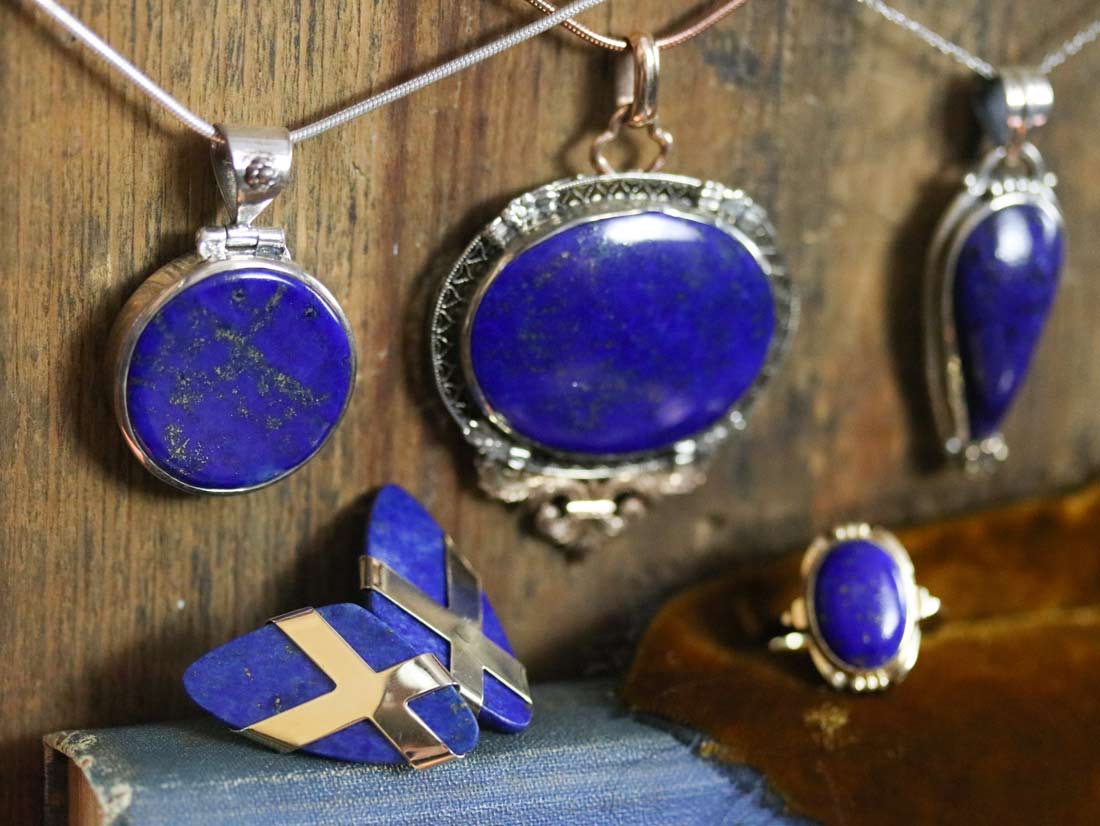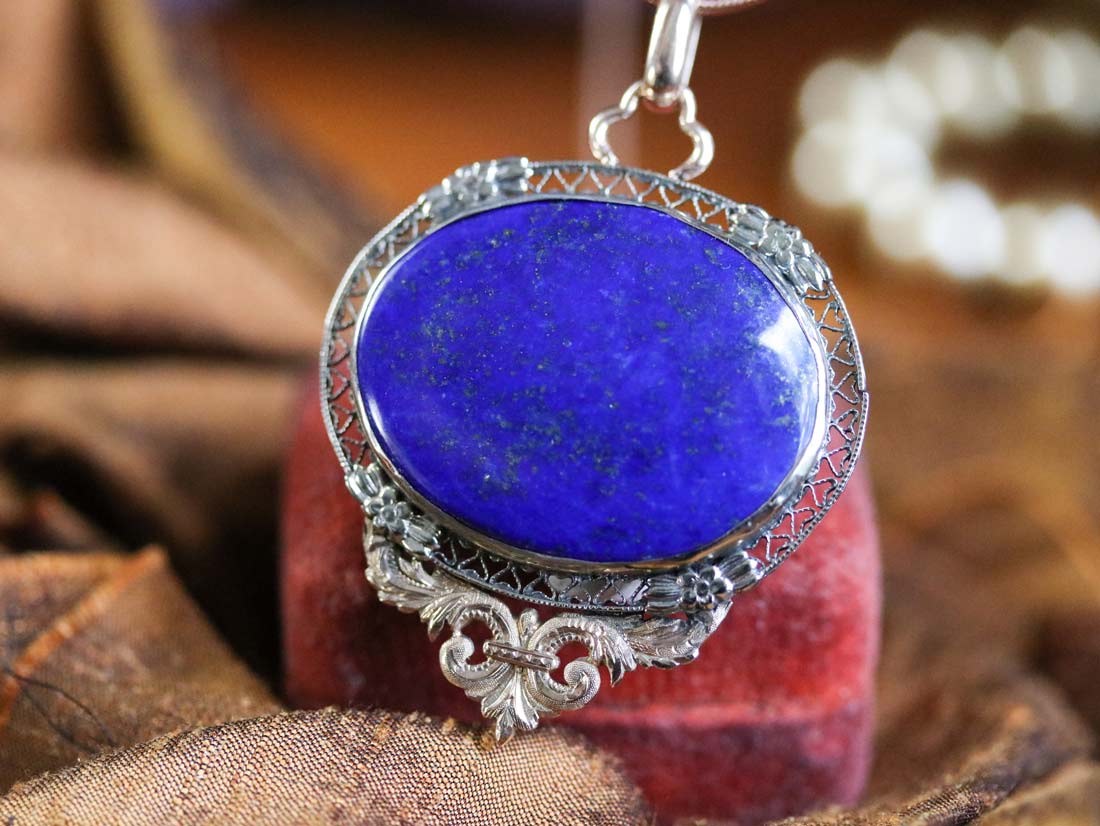BUY ONE GET ONE BAND 25% OFF! discount at checkout
BUY ONE GET ONE BAND 25% OFF! discount at checkout
BUY ONE GET ONE BAND 25% OFF! discount at checkout
BUY ONE GET ONE BAND 25% OFF! discount at checkout
Add description, images, menus and links to your mega menu
A column with no settings can be used as a spacer
Link to your collections, sales and even external links
Add up to five columns
Add description, images, menus and links to your mega menu
A column with no settings can be used as a spacer
Link to your collections, sales and even external links
Add up to five columns
August 22, 2019 3 min read
Lapis lazuli, also called lapis, is one of those stones that seems to have a certain aura around it. Its deep, royal blue hue dotted with gold flecks looks like a starry sky at twilight. Lapis has been revered for thousands of years, and used in jewelry worn by only the highest in society. Learn more about this ancient stone and its fascinating history.
Lapis is comprised of several minerals, mainly lazurite, calcite and pyrite. Lazurite is the component that causes the vivid royal blue of lapis, and pyrite is responsible for the flecks of pale gold glitter in the stone. A large presence of lazurite with no visible white calcite makes the most desirable lapis specimens. Lapis rates from 5 to 6 on the Mohs hardness scale, and ranges semi-translucent to opaque.
The finest lapis continues to be sourced in the mountains of Afghanistan. This is where the world’s oldest known commercial gem mines are, which were used as far back as 700 BCE. Other modern sources of lapis include Chile, Siberia (Russia), Angola, Canada, USA, and Pakistan.

Lapis lazuli can be traced back as far as 6,500 years, and was revered across ancient civilizations. The Sumerian goddess of love, Inanna, wore a lapis necklace in a myth believed to date back to 4000 BCE. Ancient Mesopotamian rulers were buried with carved lapis objects, and deity temples were decorated with lapis ornamentation. Ancient Romans believed the stone was a powerful aphrodisiac. Ancient Egyptians loved the stone and used it for everything from cosmetics, to amulets, to official stamps. Lapis was believed to have a direct connection with the divine, to attract prosperity, and to have the power to ward off the evil eye.
Though lapis was eventually introduced to Europe during the Crusades, it was reserved only for the wealthiest class. In the 13th and 14th centuries, painters used ground lapis to make ultramarine paint for use in fine art. Lapis pigmented paint continued to be used through the Renaissance in religious paintings, and in the 17th century was used famously by Dutch painter Johannes Vermeer. In 16th century in Italy, artisans mastered the art of carving large lapis rocks into decorative objects, such as bowls and goblets.

In the practice of feng shui, lapis represents wealth, abundance, protection, and tranquility. In metaphysical practices, lapis is believed to promote wisdom, memory, and enhanced learning. In healing, it has been used to benefit throat and ear ailments. Lapis is associated with the throat chakra, and since Ancient Egypt has been associated with the third eye.
When shopping for lapis jewelry, look for stones with an indigo to royal blue hue. The best lapis stones are uniform in color, with no white matrix. The gold flecks should be attractive to the stone (too much pyrite can cause a green hue). Some more expensive stones have no visible pyrite at all, and are completely uniform in color.
Lapis is used a lot in Egyptian revival jewelry, often paired with ancient motifs recalling its history. Lapis is also carved into pendants and beads, just as it was centuries ago. When you put on a piece of lapis jewelry, you are wearing a stone with true heritage and legacy.
Shop our collection of lapis estate jewelry here.

September 17, 2021 2 min read
July 26, 2021 4 min read
June 29, 2021 9 min read
Get 10% off your next purchase!

Get 10% off when you sign up for our newsletter!